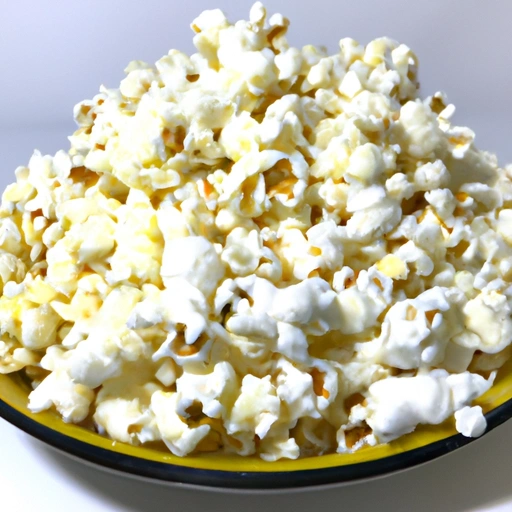Popcorn
Description

Popcorn is a type of corn (Zea mays var. everta) that expands and puffs up when heated. The kernel's strong hull contains the seed's hard, starchy endosperm with 14-20% moisture, which turns to steam as the kernel is heated. Popcorn is a popular snack enjoyed by people of all ages, known for its distinct popping sound and fluffy texture when cooked.
Common uses
Popcorn is typically eaten as a snack, either plain or flavored with a variety of toppings such as butter, salt, sugar, caramel, cheese, or spices. It is also used as a festive decoration during holidays like Christmas when it is strung on threads and hung on trees.
Nutritional value
Calories
One cup (8 grams) of air-popped popcorn contains approximately 31 calories (130 kilojoules).
Protein
Each cup of popped popcorn provides about 1 gram of protein.
Fat
Popcorn without added butter or oil contains about 0.4 grams of fat per cup.
Carbohydrates
There are roughly 6 grams of carbohydrates in one cup of air-popped popcorn.
Vitamins
Popcorn contains small amounts of B vitamins, particularly niacin, riboflavin, and thiamine.
Minerals
It is a good source of minerals such as magnesium, phosphorus, potassium, and zinc.
Health benefits
Popcorn is high in fiber, which can aid in digestion and help to promote feelings of fullness. Its polyphenolic compounds act as antioxidants, which can help protect cells against damage by free radicals. Eating popcorn in moderation, without high-calorie toppings, can be a healthy addition to a balanced diet.
Potential risks
Commercially prepared popcorn can be high in sodium and unhealthy fats due to added butter, oil, and seasonings. Consuming too much can lead to weight gain and other health issues. Individuals with digestive issues such as diverticulitis should avoid popcorn because the kernels can aggravate the condition.
Common recipes
Popcorn is used in a variety of recipes such as popcorn balls, popcorn brittle, and as a crunchy topping for soups and salads.
Cooking methods
Popcorn can be air-popped, microwaved, or popped in a pan or popcorn machine with oil or butter.
Pairing with other ingredients
Popcorn pairs well with nuts, dried fruits, chocolates, and can be included in trail mix for added texture.
Summary
Popcorn is a versatile, whole-grain snack that is low in calories but high in fiber and antioxidants. While it is nutritious on its own, added toppings can greatly increase the calorie and fat content. Its historical roots and the simple joy of its preparation make it a staple in many cultures. Popcorn can be enjoyed in a variety of ways, both sweet and savory, and continues to be a favorite snack around the world.